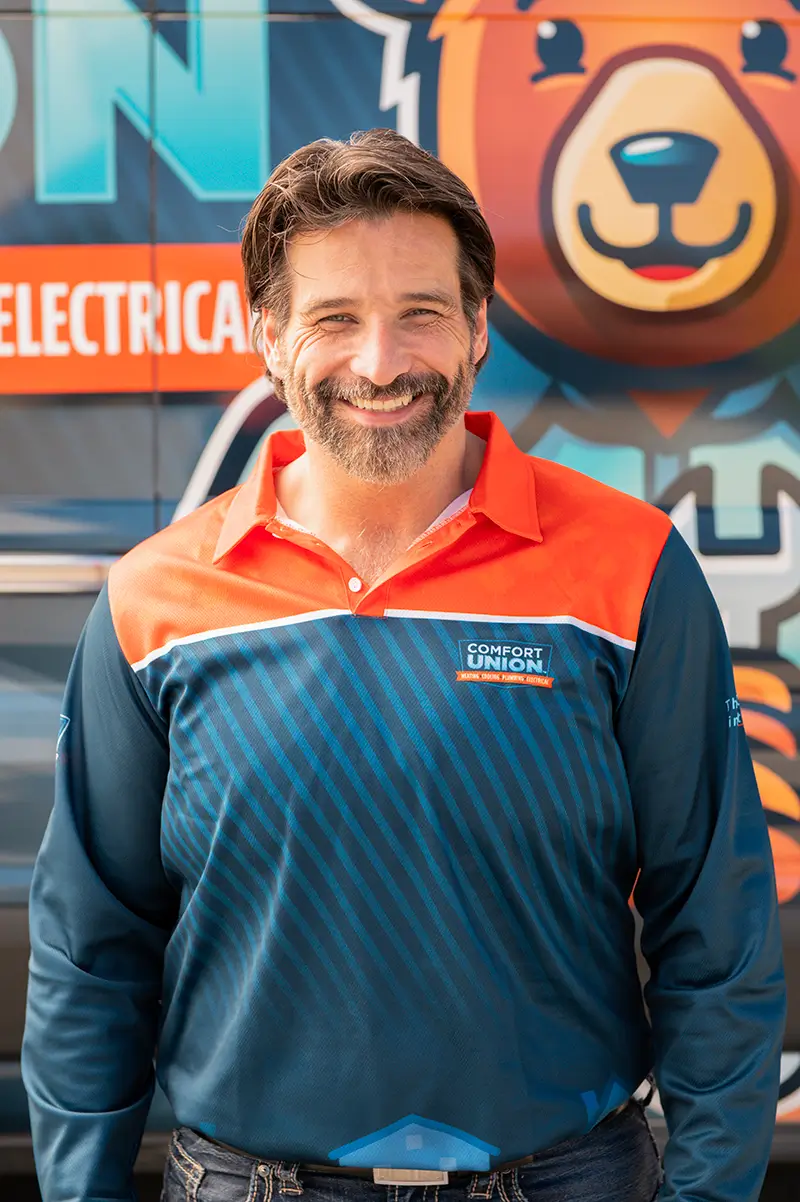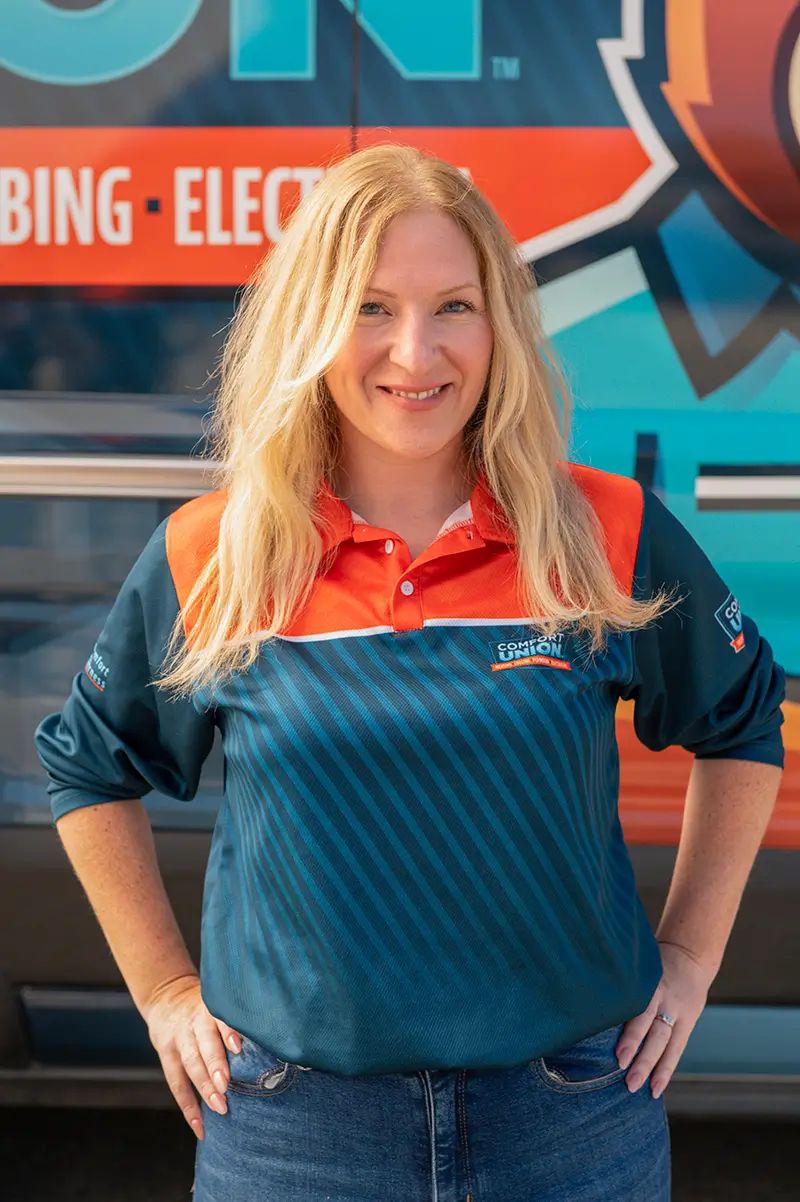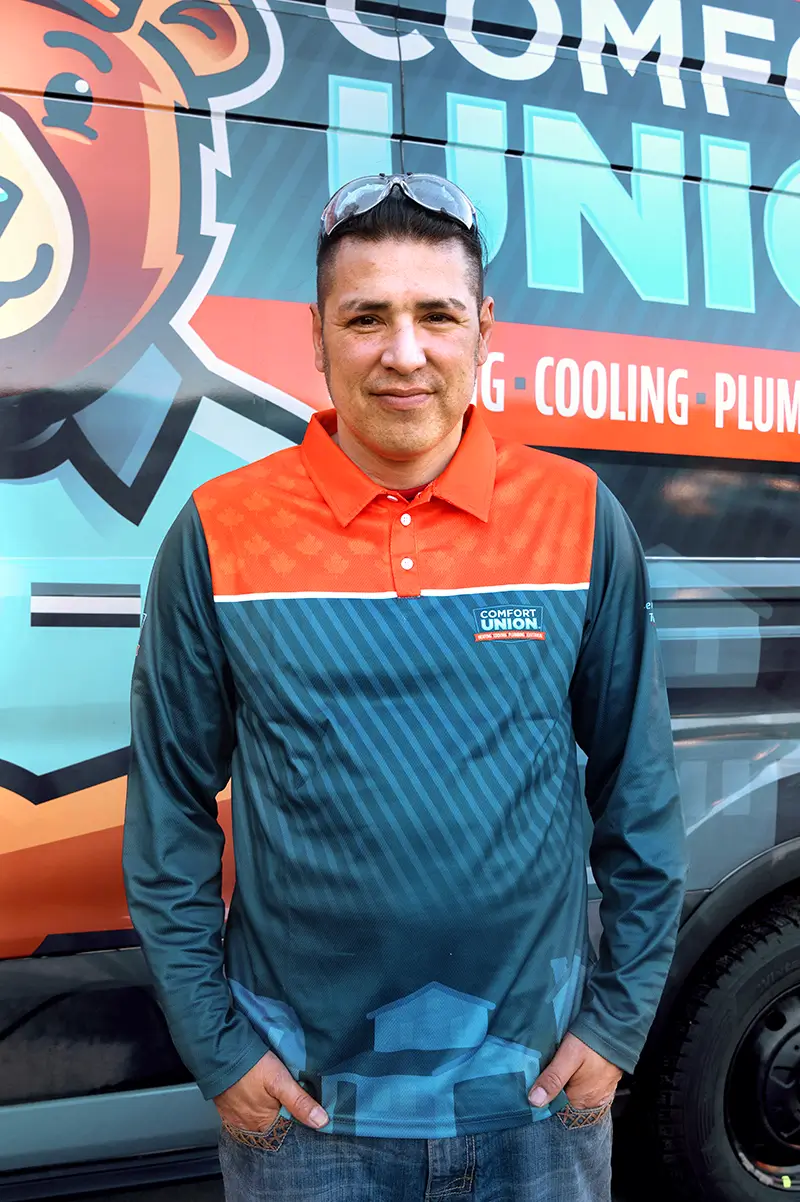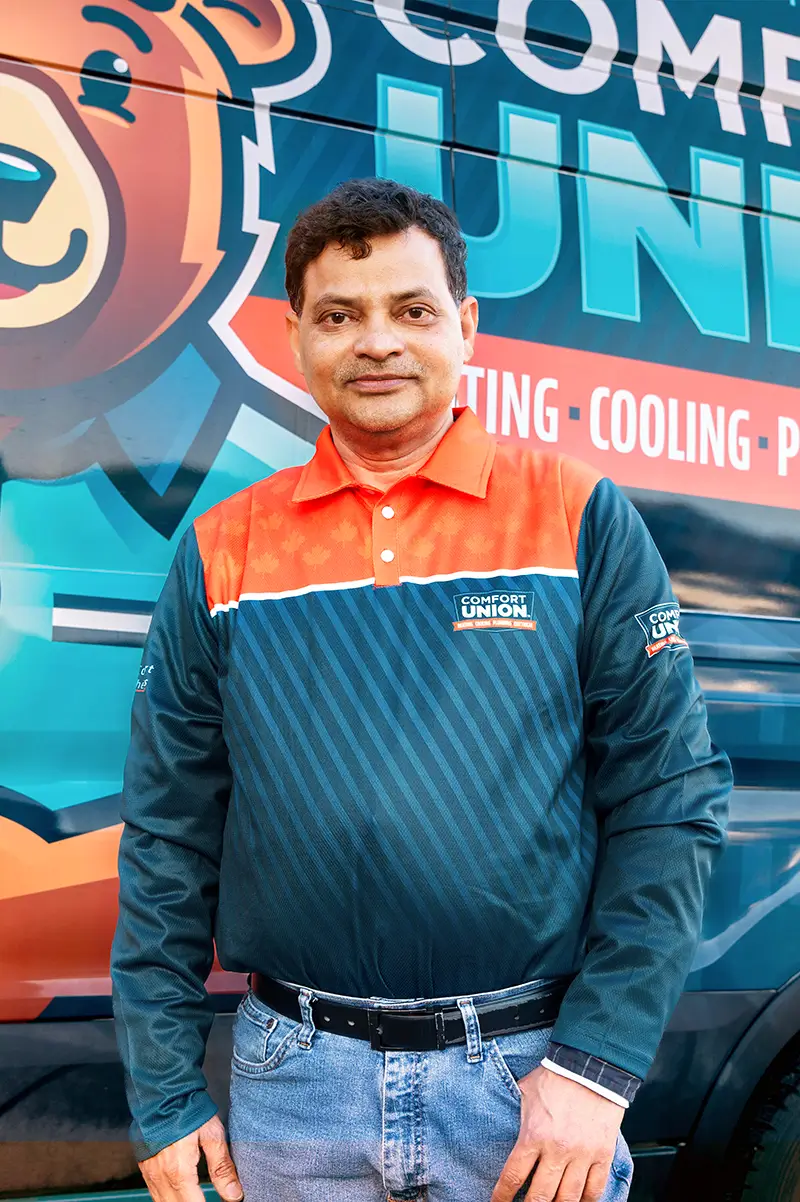In Calgary, where winter can linger for half the year, a reliable water heater isn’t optional; it’s essential. But if you’re replacing your old tank, one question always comes up: should you go with a power vent or an atmospheric vent model?
The answer depends on your home’s layout, efficiency goals, and even Calgary’s unique weather conditions. In this guide, we’ll break down how both systems work, their pros and cons, and which one is best suited for your Calgary home in 2025.
Need a New Hot Water Tank?
With Flexible Financing Options
What’s the Difference Between Power Vent and Atmospheric Vent Water Heaters?
Both power vent and atmospheric vent water heaters heat water using natural gas, but the way they expel exhaust gases sets them apart.
Atmospheric vent water heaters rely on natural convection, which means that the hot gases rise through a metal flue or chimney and exit your home passively. It’s a simple, time-tested design that works well in homes with existing vertical venting.
Power vent water heaters, on the other hand, use an electric fan to push exhaust gases outside through PVC piping. This setup allows for horizontal venting through a side wall, making it ideal for homes without a chimney or for newer Calgary builds with tightly sealed construction.
How Each Type Works
Each type of water heater has its own unique system, which means they work differently. Let’s take a look at how they work so that you get to know these two types of water heater more.
Atmospheric Vent Water Heaters
These are the traditional models you’ll find in many older Calgary homes. They work by heating water and letting the combustion gases naturally rise and escape through a metal flue pipe that leads to a chimney.
They’re affordable, straightforward, and don’t rely on electricity. But their performance depends heavily on having a good indoor air supply and stable draft conditions—which can be tricky during cold, windy Calgary nights.
Power Vent Water Heaters
Power vent units use a small fan motor to actively push exhaust gases outdoors. Instead of needing a vertical chimney, they can vent through horizontal PVC piping. This makes them great for finished basements or newer homes with no chimney access.
These models tend to be quieter, more efficient, and safer because they prevent exhaust gases from re-entering the home. However, they do require electricity to operate, which adds a small power draw.
Pros and Cons of Each System in Calgary’s Climate
Each of these systems has its own pros and cons. If you’re interested in which one you should get, knowing what makes them good or bad is important to help your decision.
Atmospheric Vent Water Heaters Pros & Cons

Here are its pros and cons:
Pros:
Atmospheric tanks are generally less expensive upfront and easy to maintain. They’re ideal for older homes with existing chimneys, and because they don’t rely on a fan, they still function during power outages.
Cons:
They can struggle in Calgary’s tightly sealed modern homes, where there’s less indoor air circulation for proper venting. Backdrafting (where exhaust gases re-enter the home) can be a concern during extreme cold or high winds. They’re also less efficient overall, leading to higher utility bills over time.
Power Vent Water Heaters Pros & Cons
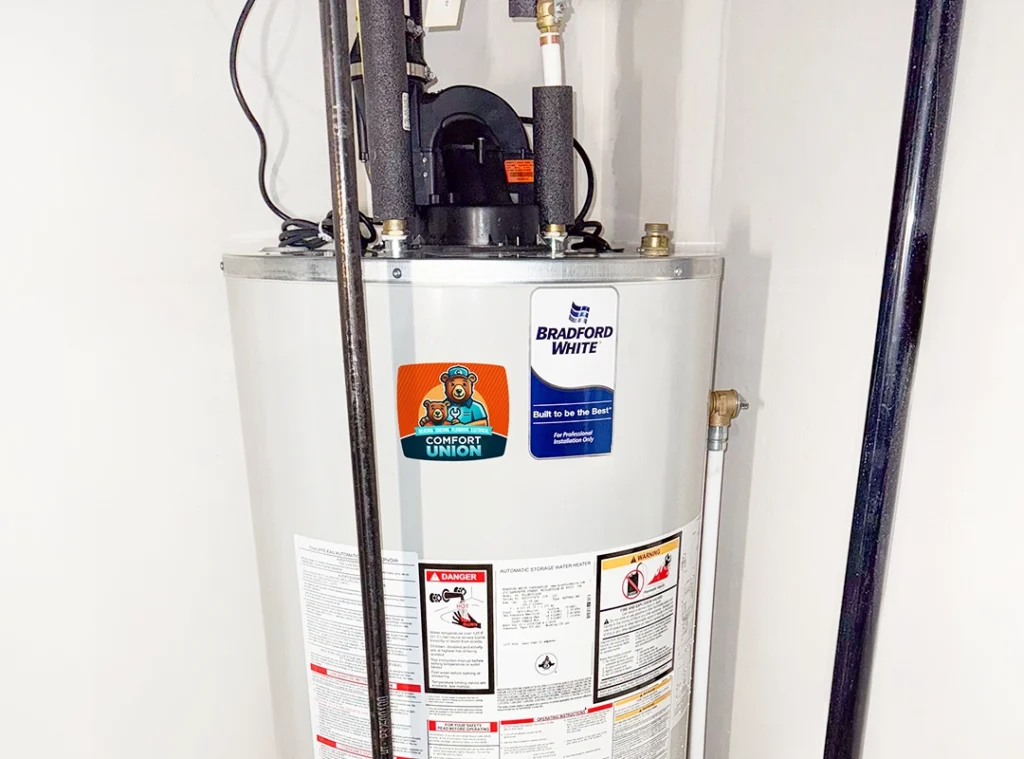
Here are its pros and cons:
Pros:
Power vent models are more energy-efficient and safer for modern airtight homes. Their sealed combustion system prevents backdrafts and gives you more flexibility for installation—especially in finished basements common across Calgary neighborhoods like Tuscany, Seton, and Evanston.
Cons:
They cost a bit more to install and depend on electricity to run the fan. If there’s a power outage, they won’t operate unless connected to a generator. Some homeowners also notice a faint hum from the fan motor during operation, though modern units are much quieter than older ones.
Installation Differences
Power vent heaters can be installed almost anywhere because they vent through PVC pipes horizontally. This makes them perfect for basements without chimney access or for newer Calgary homes that prioritize sealed air systems for energy efficiency.
Atmospheric heaters need to vent vertically, usually into a chimney or through the roof, limiting installation options. They’re often easier to replace in older homes where this venting already exists, but can be costly if retrofitting is required.
For professional installation, Comfort Union offers expert hot water tank installation in Calgary with customized venting solutions to match your home layout.
Cost Comparison: Power Vent vs Atmospheric Vent in Calgary (2025)
- Atmospheric vent water heaters: Typically cost between $1,800 and $2,800 installed.
- Power vent water heaters: Range from $2,800 to $3,800 installed, depending on the model and venting complexity.
While the upfront investment in a power vent heater is higher, its efficiency and safer exhaust management make it a smart long-term upgrade, especially for Calgary’s long heating season and fluctuating weather.

Which Type Is Better for Your Calgary Home?
If you live in an older Calgary home with an existing chimney and good ventilation, an atmospheric vent water heater can still be a solid choice. It’s affordable and reliable, especially for smaller households or those who don’t mind a bit of heat loss.
But for newer, tightly sealed homes or finished basements without chimneys, a power vent system is the better long-term solution. It’s safer, more efficient, and provides more flexibility for placement.
Homeowners exploring energy-efficient options may also consider tankless water heaters for endless hot water and even greater energy savings.
Maintenance and Lifespan Tips for Both Types
A few simple maintenance habits can dramatically extend the life of your water heater, especially in Calgary’s hard-water conditions.
1. Clean Power Vent Fans and Venting
Power vent units rely on a motorized fan to move exhaust, so keeping the fan and vent system clean each year helps prevent airflow blockages and overheating. A quick annual cleaning keeps the system running smoothly and reduces strain on the motor.
2. Inspect Atmospheric Flue Pipes
Atmospheric models depend on natural draft, which means any blockage or corrosion in the flue pipe can disrupt ventilation. Regular inspections ensure toxic gases leave your home safely and your heater maintains proper combustion.
3. Flush the Tank to Remove Sediment
Calgary’s hard water causes mineral buildup that settles at the bottom of the tank, reducing efficiency and making the heater work harder. Flushing the tank once a year helps maintain heating speed and prevents overheating.
4. Replace the Anode Rod Periodically
The anode rod protects your tank from rust by absorbing corrosion, but it wears down over time. Replacing it every few years can significantly extend the life of your water heater and delay the need for a full replacement.
5. Schedule a Professional Tune-Up Before Winter
A yearly inspection ensures sensors, burners, and safety components are working properly before temperatures drop. This reduces the risk of midwinter failures and keeps your hot water supply dependable all season.
FAQs Calgary Homeowners Ask About Venting Water Heaters
What is the lifespan of a power vent water heater?
Most power vent units last 10 to 15 years, depending on maintenance and water quality.
Can I replace an atmospheric vent heater with a power vent?
Yes, but it requires additional electrical work and vent installation. A licensed Calgary technician can handle the conversion safely.
Which is safer for my home?
Power vent heaters are safer because they use sealed combustion and prevent backdrafting.
Do power vent water heaters work during a power outage?
No. They require electricity to run the exhaust fan, but backup power options like small generators can solve this.
Which is more efficient for Calgary’s climate?
Power vent systems perform better in Calgary’s cold, dry air because they retain heat more effectively and reduce gas waste.

Professional hot water tank installs in Calgary with energy-efficient models, expert setup, and clean workmanship, backed by Comfort Union’s trusted team.

Upgrade to a tankless water heater in Calgary with 24/7 installation service, transparent pricing, and expert HVAC professionals you can count on.

Quick and reliable tankless water heater repairs in Calgary. Get fast diagnostics, honest pricing, and long-term performance from local specialists.








